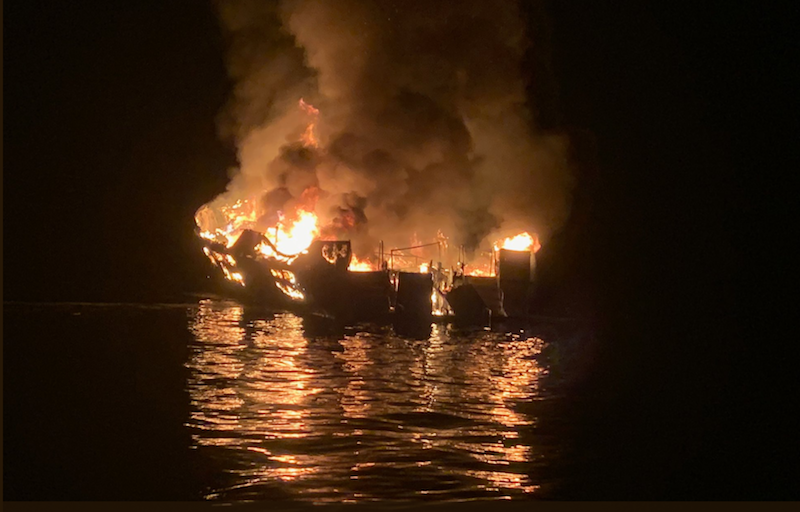Commercial mariners have a deep respect for shipboard fires. They realize how quickly a vessel can be overwhelmed by flames and smoke. History offers tragic examples such as the General Slocum in 1904, Morro Castle in 1934 and the recent California dive boat Conception.
In the September 2019 fire that consumed the Conception while it was anchored, 33 passengers and one crewmember perished. While nothing good can be said about such a terrible disaster, the fire did result in recent recommendations from the National Transportation Safety Board (NTSB) that could hopefully help avert such tragedies in the future.
The NTSB identified a number of issues that contributed to the heavy loss of life, including lack of small passenger vessel regulations requiring smoke detection in all accommodation spaces and a design where both methods of escape from passenger areas led to the main salon (which had filled with fire and heavy smoke). It also pointed to a lack of training, emergency drills, and roving patrols as factors.
The NTSB made a number of recommendations after conducting its investigation. It recommended requiring that newly constructed vessels with overnight accommodations have smoke detectors in all accommodation spaces. It extended this same recommendation to currently operating vessels, including those built before 1996.
The NTSB also recommended interconnected smoke detectors, where one activated detector causes others to go off around the vessel. Also on the NTSB’s list was an inspection procedure to verify that small passenger vessel owners, operators, and charterers were conducting roving patrols. The NTSB additionally called for a secondary means of escape into a different space than the primary exit. Another recommendation included a fleetwide safety management system for the dive boat operator to improve safety practices and minimize risk.
When it comes to shipboard fire, one could appreciate the philosophy of William Francis Gibbs, designer of SS United States. His concern about eliminating sources of fire from shipboard materials led him to insist on no wood being used throughout the ocean liner, other than a rare fire-resistant mahogany in the ship’s pianos.




